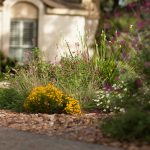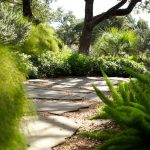Sunny Spots
Tough blooming perennials and wildflowers have no trouble toughing out the brutal heat of the summer.

Texas Hot
South Texas is warm most for the year and downright hot in the summer. It’s Texas, yet wild Texas is full of plants that are never watered and make it through all but the longest droughts.
Your landscape can do the same, and unlike the true deserts of the American west, central Texas has a wide variety plants to choose from. You do not have to recreate a desert landscape in San Antonio. In fact, it is best not to as rock landscapes mimicking the desert west add to the heat and are more trouble to maintain than you think.
Sunny Spot Elements
Plants
Select your plants carefully. Your sunny spots can host a variety of tough blooming perennials and wildflowers as well as structural plants you’ll find in the agave, sotol and cactus category.
Water
New plants will need to be watered to get established. The best way to water new plants is with a handheld hose. Use the 3-2-1- method. In a deep heat wave, you’ll need to add a bit of water. Watch your plants for morning wilt. That is a good indication they could use a drink.
Mulch
Best choice: Leaves from your trees raked and spread into your beds. This is also the easiest and cheapest choice.
Next choice: Organic mulch, usually shredded pine bark mulch. Stay away from cypress mulch. It’s made from cypress cut in the Everglades.
Last choice: Inorganic mulch, better known as rock or decomposed granite. If you do use it, use it sparingly and with purpose. It will not improve soil like leaves and organic mulch. It is also harder to maintain, only vigilant cleaning will keep it weed free. Weed block will not prevent weeds.
DESIGNS
TEXAS HILL COUNTRY LANDSCAPE
Many sunny yards are in newer neighborhoods in the Hill Country that do not have mature trees after development. Consider these design elements:
- Use existing limestone outcroppings
- Minimize use of turf
- Save a space for wildflowers
- Use of plants native to the Hill Country
- Choose plants that do well in thin, alkaline soils.
MAINTENANCE TIPS
- Replenish mulch once or twice a year.
- Prune back perennials as needed in late winter.
ADDITIONAL TIPS
Don’t use pesticides. A wide variety of plants helps bring protection against pests. “Good” bugs that are attracted to your landscape should easily control the “bad” bugs that are there.




